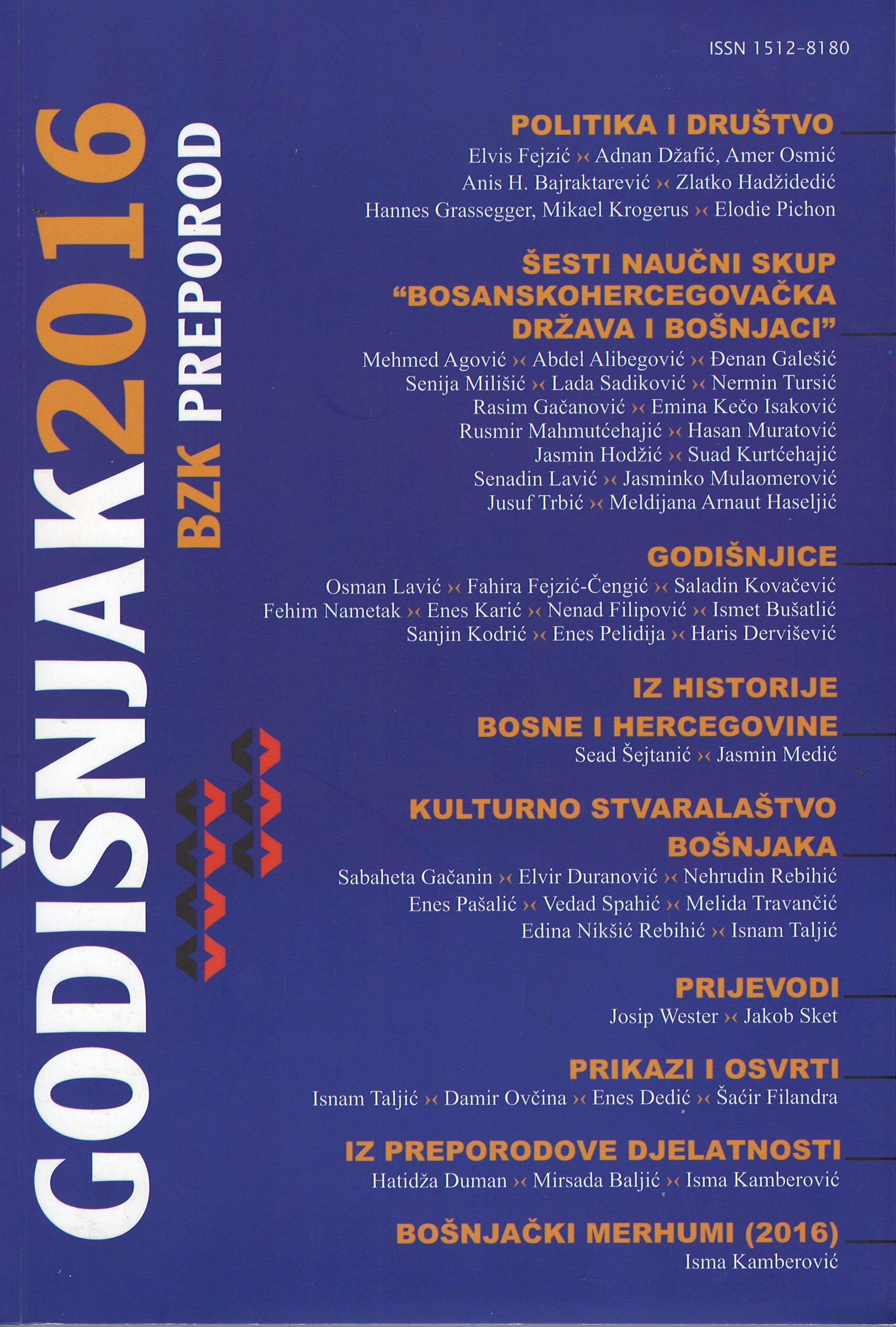Umjetnost između estetike, etike i ideologije. Povodom objavljivanja knjige Rusmira Mahmutćehajića: Andrićevstvo
ART BETWEEN AESTHETICS, ETHICS AND IDEOLOGY
Author(s): Enes PašalićSubject(s): Essay|Book Review |Scientific Life, Review, Bosnian Literature
Published by: Bošnjačka zajednica kulture "Preporod"
Keywords: Rusmir Mahmutćehajić; Ivo Andrić; Andrićevstvo; ideology; deconstruction; taboo; transcendental principle; mysterium tremendum; faith; religion; monotheism; truth;
Summary/Abstract: Rusmir Mahmutćehajić’s book "Andrićevstvo" is an attempt of detabooized reflection of Andrić's works, which puts a special emphasis on analysis of their ideological content, and on cultural and ideopolitical influence which it had on former Yugoslavia, especially on Bosnia and Herzegovina. In doing so, the author attempted to open up new dimensions of reading Andrić's works, without questioning the aesthetic value of the work itself, which in the end proved to be unsustainable. Instead of deconstruction, Mahmutćehajić’s reflection at the end proved to be the destruction of Andrić's works, qualifying them as ideological construct, aesthetics in the service of ideology, which was and still is the conceptual basis of ideologies of ethnic cleansing and genocide. It is not disputable that the worldview basis of Andrić's literary world consists of ideological Euro-centrism, Christian-centrism and Orientalism in which Muslims represent “the fundamental enemy”. However, what is disputable is the questioning of aesthetic values of Andrić’s works, that which Hegel and Heidegger see as the fundamental definition of the great works of art: their ability to discover truth in the world they represent. The main methodological problem in Mahmutćehajić’s qualification of Andric's works as untrue and opposed to reality, is that he hypostatizes Reality itself and Truth itself, and then on the basis of his own knowledge on the Truth of that Reality, he declares Andrić's work as untrue, and in doing so, he doesn’t question the assumptions of his own knowledge. For Mahmutćehajić, the transcendental principle is the condition for possibility of knowing that Reality. Transcendental principle is faith, which should be distinguished from religion, and concerns the primordial relation between man and God. The basis of this relationship is the mysterium tremendus or "terrible mystery", the willingness to sacrifice the most loved ones in the name of God (Abraham and Isaac). Only on the basis of willingness to sacrifice (violence) religion becomes possible, as an institutionalized system of beliefs. In the context of monotheism, this belief system claims to be an absolute truth, which is not complementary to other truths. Mahmutćehajić takes Islam for his transcendental principle, as the last monotheistic religion, and from this angle he criticizes the aesthetic value (Truth) of Andrić's works, never questioning whether such criticism of Christian-centric and Euro-centric worldview is objective. Isn’t it maybe that Mahmutćehajić actually confirms, with such a "tabooed" analysis, exactly that which he challenges as untrue in Andrić's work, which is that Bosnia is a country where four faiths live, and each of them has a starting point in somebody else’s world, and not in the place where life and death happen, and each of them affirms its truth by denying the truth of others.
Journal: Godišnjak Bošnjačke zajednice kulture »Preporod«
- Issue Year: 2016
- Issue No: 1
- Page Range: 519-537
- Page Count: 19
- Language: Bosnian

